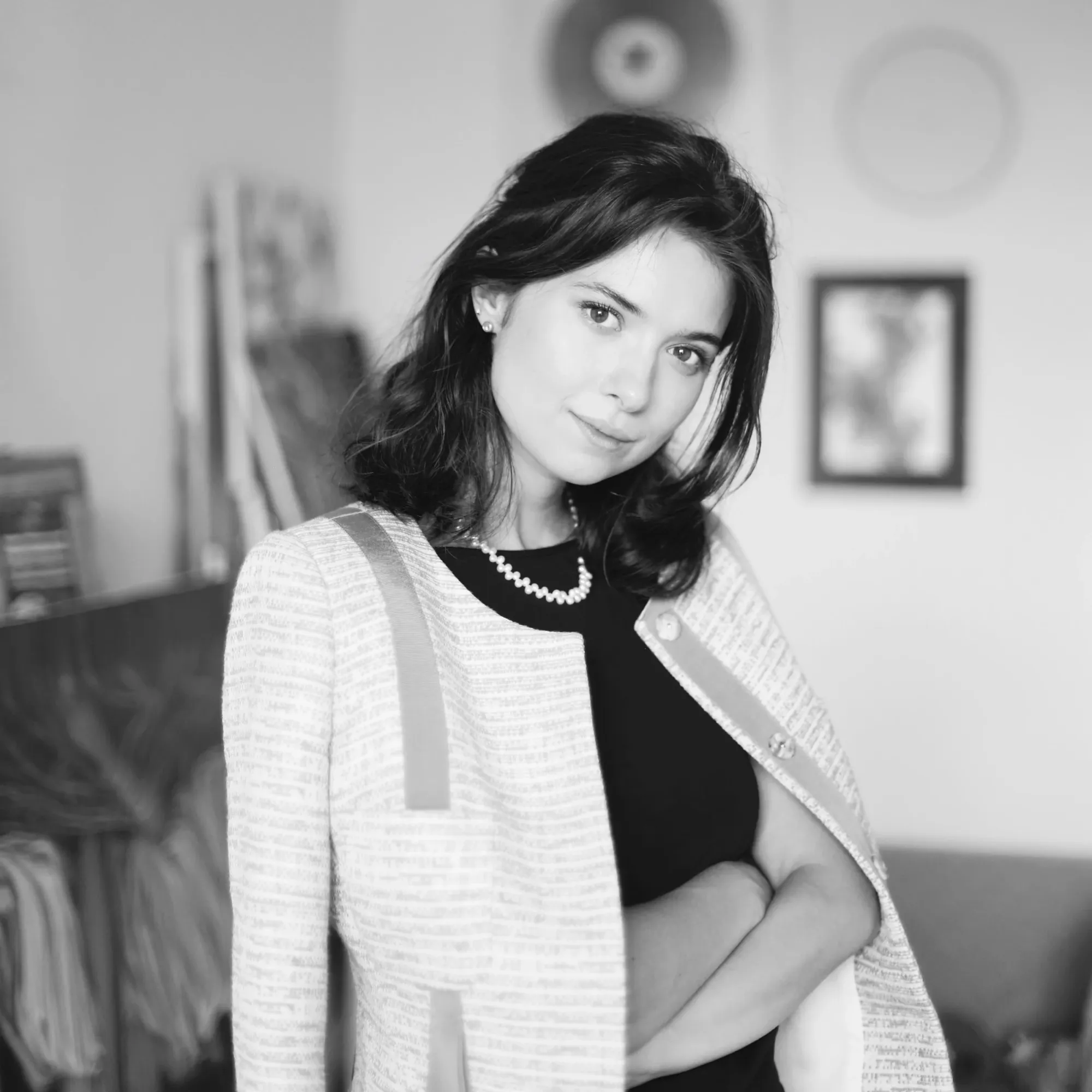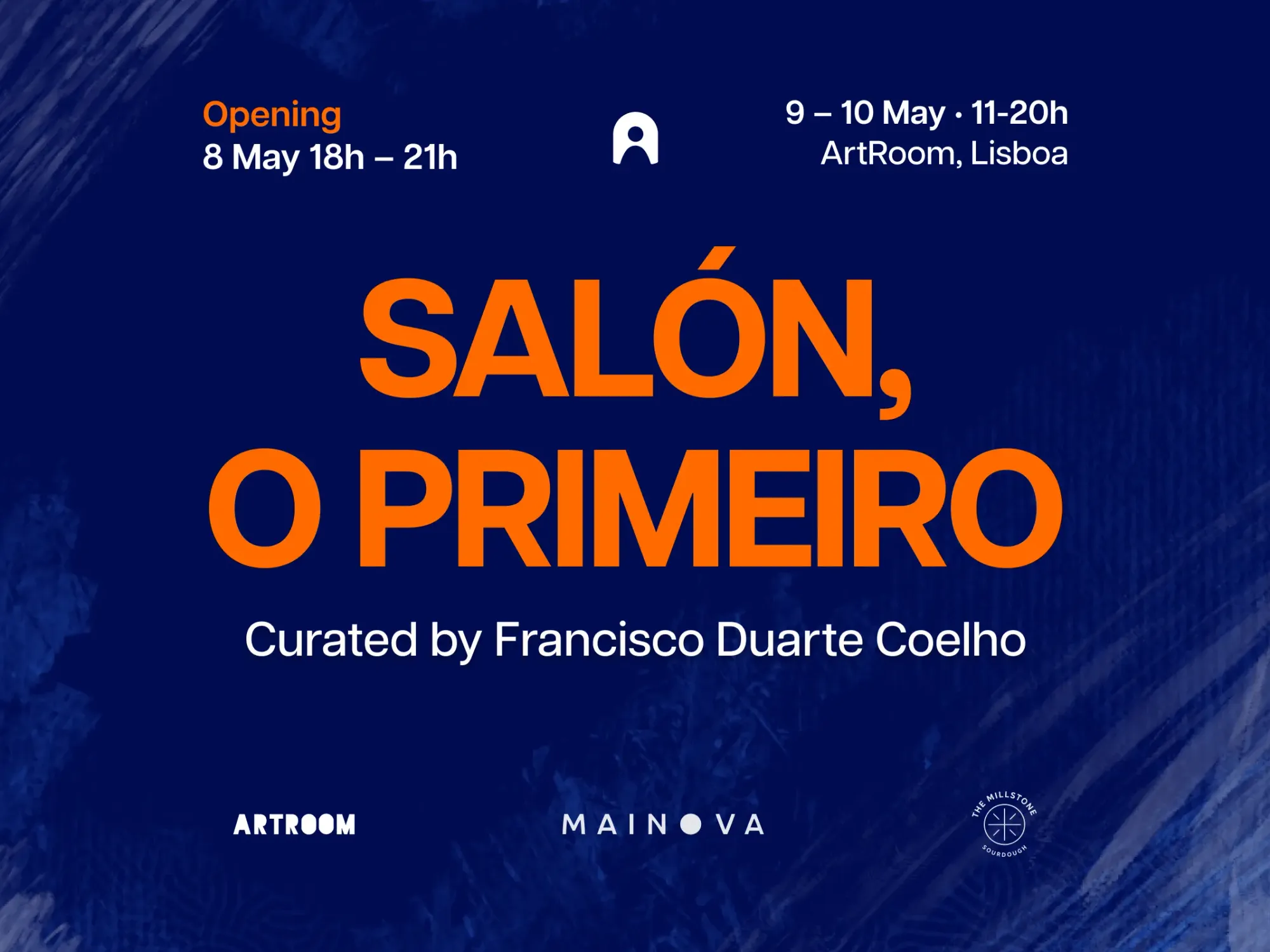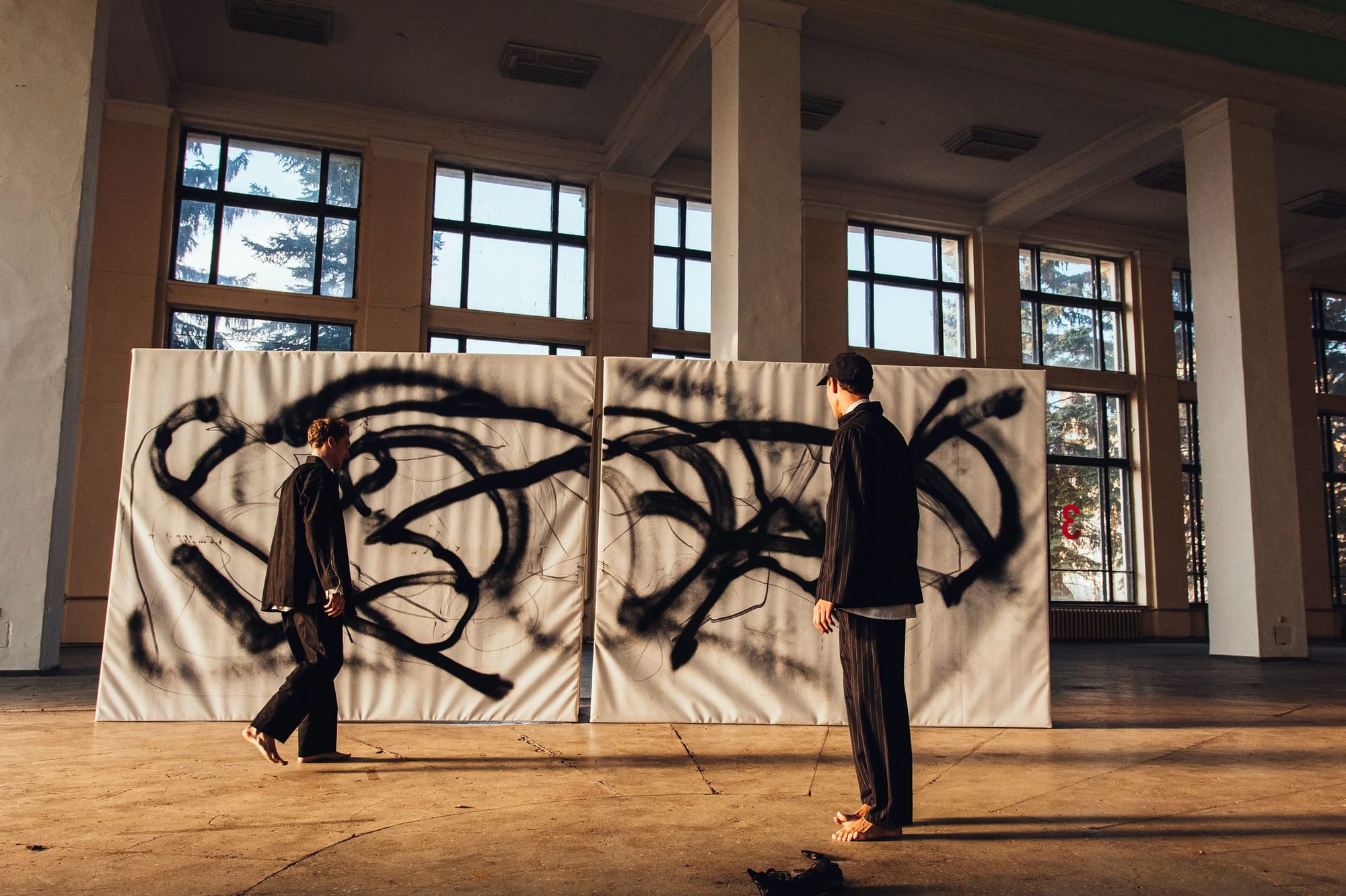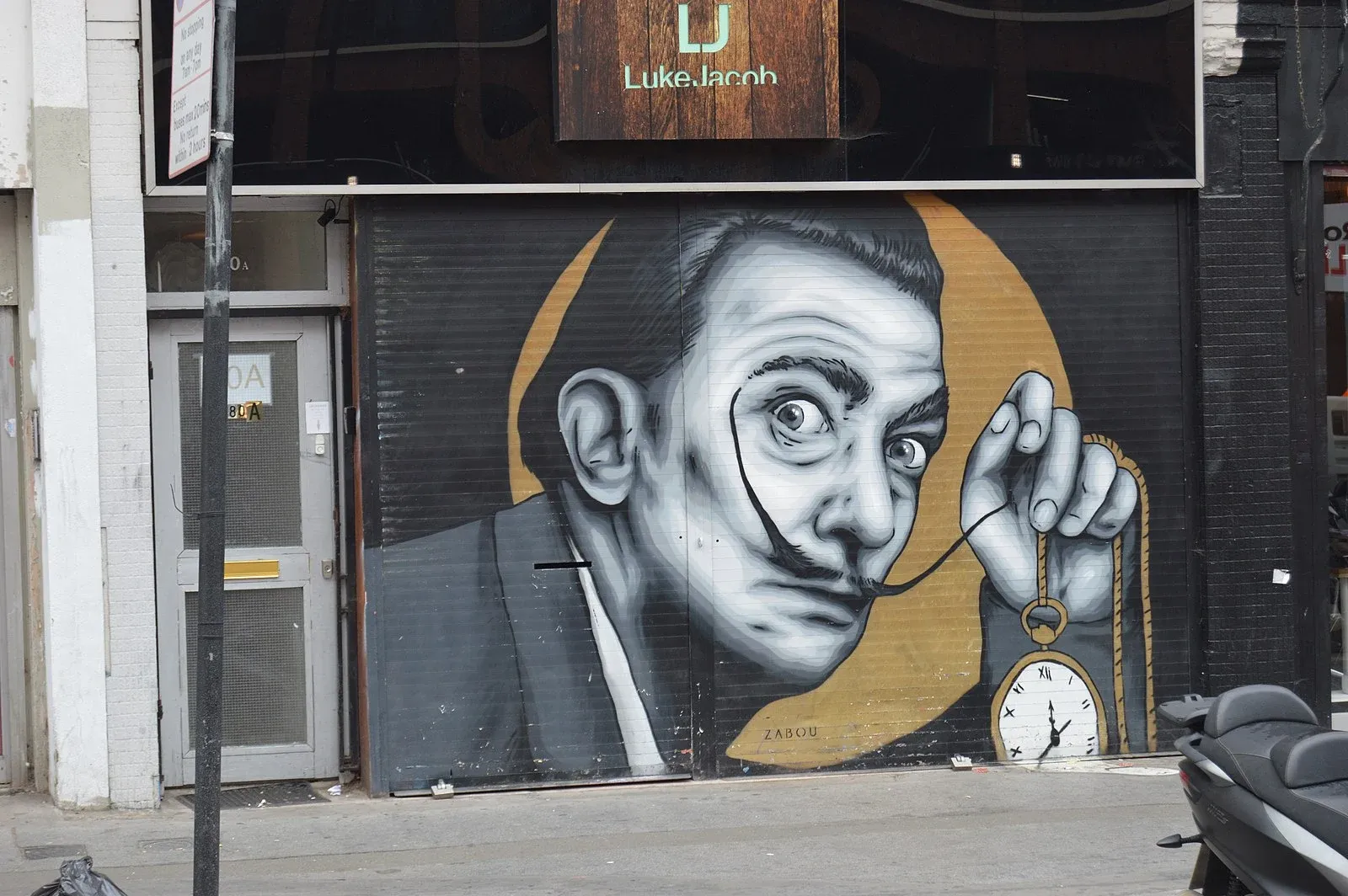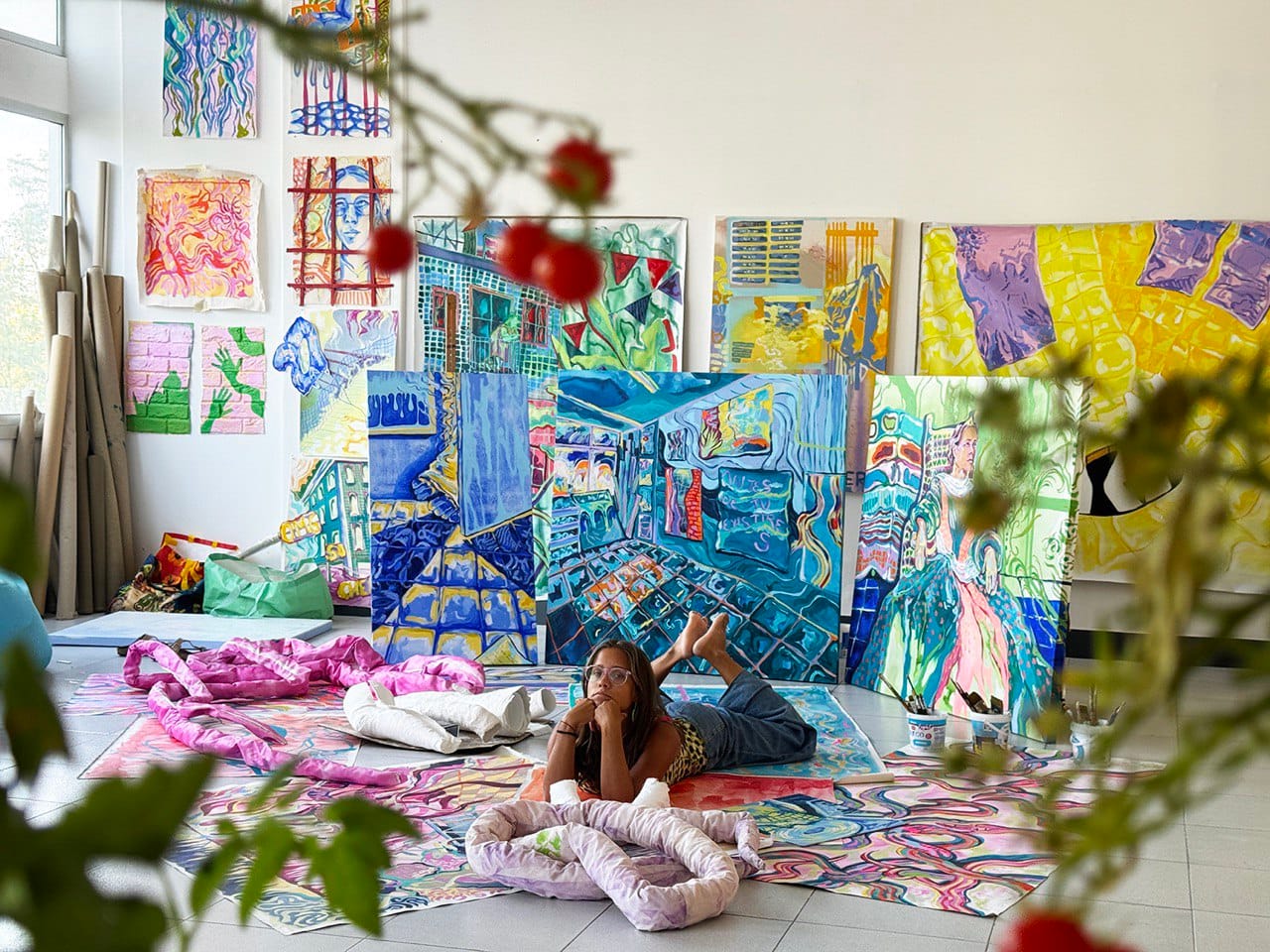Famous Portrait Paintings in Art History: Timeless Masterpieces
The study of timeless masterpieces showcases famous portrait paintings from art history.
The genre of portrait painting stands as one of history's most lasting artistic traditions. Portraits enable artists to express personal and cultural stories by either replicating physical features or exploring their subjects' inner emotional and psychological worlds. The development of portrait painting spans from Renaissance masterpieces to today's abstract expressions while capturing the evolution of artistic styles and historical contexts. The article provides an examination of notable portrait paintings along with the artists who produced them and the techniques that made these artworks so powerful.
Classical Portraits: The Foundations of Portrait Art
The Renaissance marked the major development of portraiture as a genre and left a lasting impact that inspires artists today. Renaissance portrait artists established the basis for modern human form interpretation through their celebrated works.
Leonardo da Vinci – Mona Lisa
The Mona Lisa remains the most renowned portrait painted by Leonardo da Vinci which has enthralled audiences throughout the world for more than five centuries. This mysterious portrait depicts Lisa Gherardini who was married to a prosperous Florentine merchant and Leonardo da Vinci painted it between 1503 and 1506. Da Vinci’s sfumato technique produces Mona Lisa’s soft dreamlike effect while her mysterious smile stands out as a key painting feature. The portrait became an icon of Western art because it embodies quiet introspection together with Leonardo da Vinci's precise attention to detail.
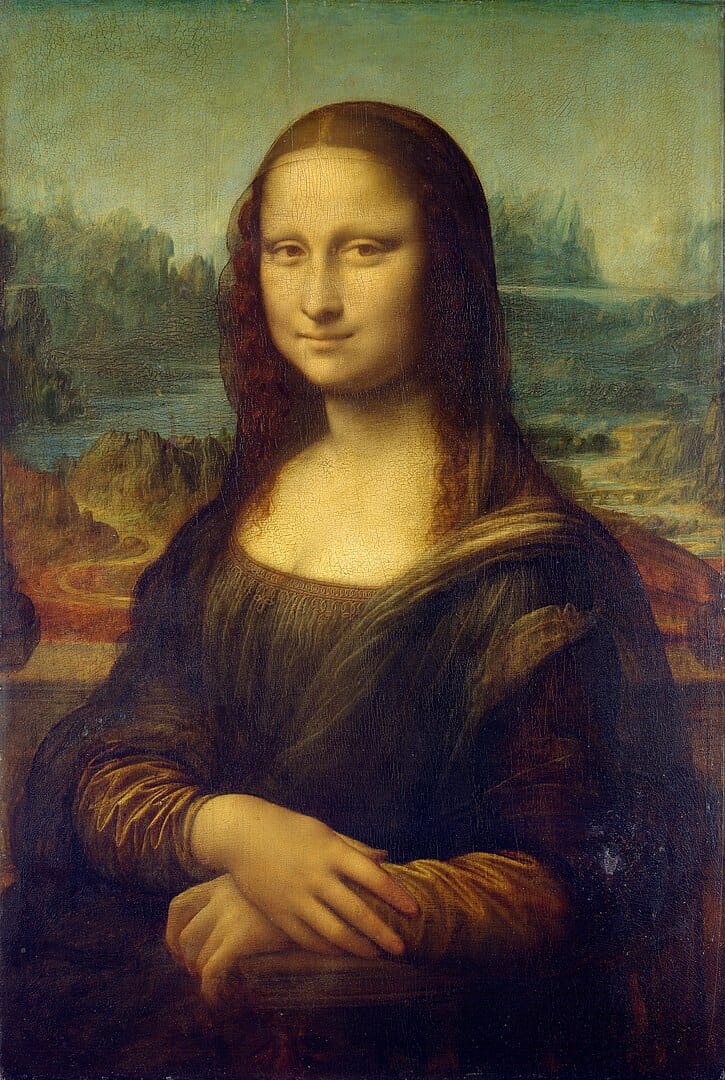
Johannes Vermeer – Girl with a Pearl Earring
One of the globally recognized masterpieces in portrait painting is the Girl with a Pearl Earring by Johannes Vermeer dating to 1665. Vermeer displays his expertise in light and shadow through the illumination of the girl's face and the pearl earring in this painting. The portrait draws viewers into its mysterious charm through the girl's direct and haunting stare that feels as though it extends beyond the canvas.
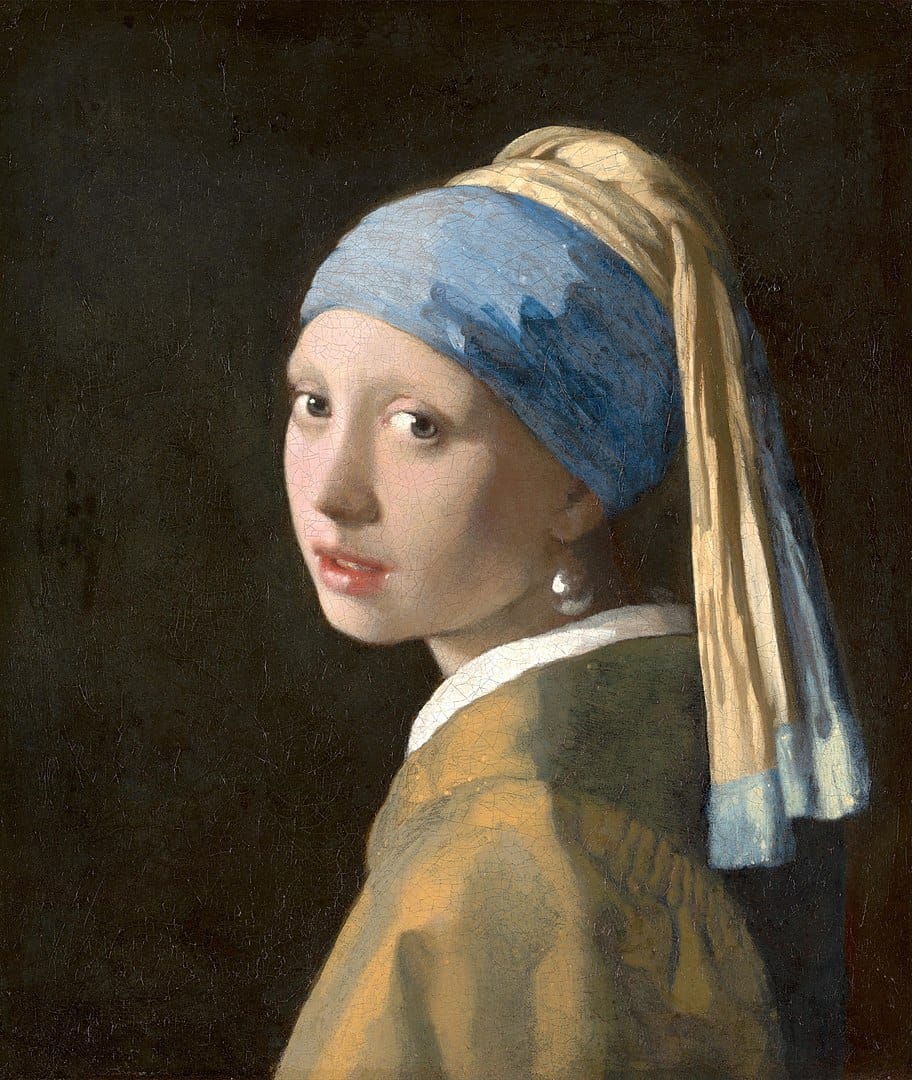
Diego Velázquez – Las Meninas
In this large-scale work Las Meninas (1656), Velázquez captures himself at work on a canvas while presenting an innovative representation of both the royal family and the artistic process. Princess Margarita Teresa stands surrounded by her entourage in this work which achieves its revolutionary status through the interaction between viewer, subject and artist. Las Meninas stands as a benchmark in portrait painting because of Velázquez's skillful combination of illusion and reality along with his exceptional application of lighting and perspective techniques.

Jan van Eyck – The Arnolfini Portrait
Jan van Eyck's Arnolfini Portrait from 1434 stands as a mysterious artistic masterpiece known for its detailed execution and groundbreaking oil paint technique. The purpose and subject of the painting remain hidden since art historians debate if it represents a wedding scene or celebrates another event like a betrothal. The early Netherlandish artwork displays symbolic elements including a convex mirror which reflects the artist's image and two background figures that illustrate the spiritual and temporal aspects of the subjects' existence. The remarkable way Van Eyck captured light and space together with his detailed representation of textures such as the dog's fur and brass candelabra stands as a major advancement in Northern Renaissance art.
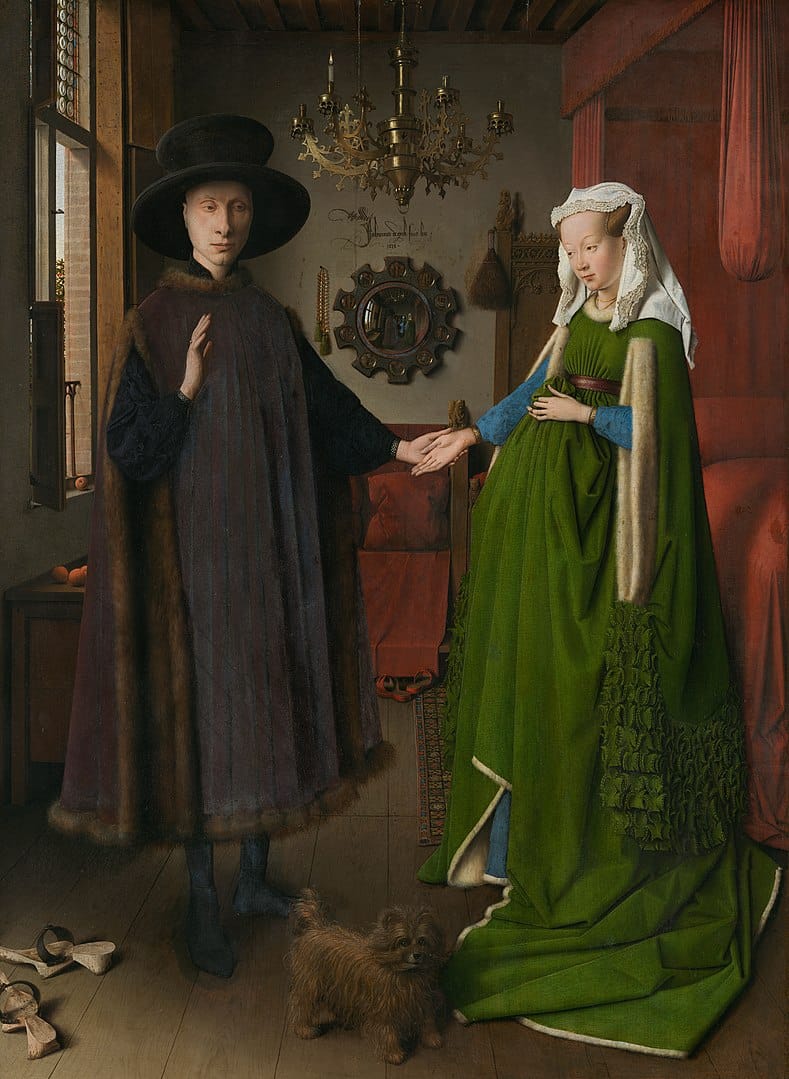
Famous Portraits in Romantic and Realist Art
The style and purpose of portraiture changed over time. During the Romantic and Realist periods art history transitioned from idealized portrayals to the creation of raw emotional representations of their subjects.
Francisco de Goya – The Duchess of Alba
The Duchess of Alba (1797) by Spanish artist Francisco de Goya demonstrates the way portraiture can mix realistic representation with strong emotional expression. Through his signature loose brushwork and the duchess's commanding stare Goya delivers an impression of self-reliance and power. The painting demonstrates changing views of European aristocracy after the Enlightenment period while emphasizing both the subject's personal identity and Goya’s emotional reaction to societal intricacies.
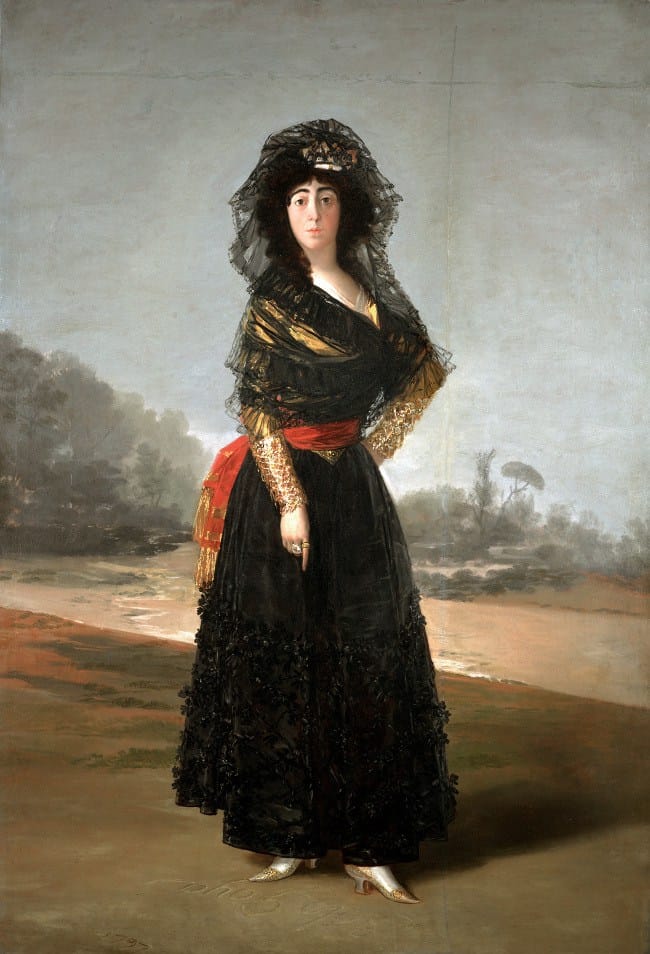
Thomas Gainsborough – The Blue Boy
British portrait painter Thomas Gainsborough created The Blue Boy in 1770 which emerged as one of the century's most iconic portraits. The artist creates a stunning combination of realism and elegance in the portrait through his vibrant use of colour including the rich blues found in the sitter's attire and his meticulous attention to the background texture and detail. The portrait demonstrates both the young subject's energy and refinement while its composition and color choices embody British upper-class aesthetics of the period.
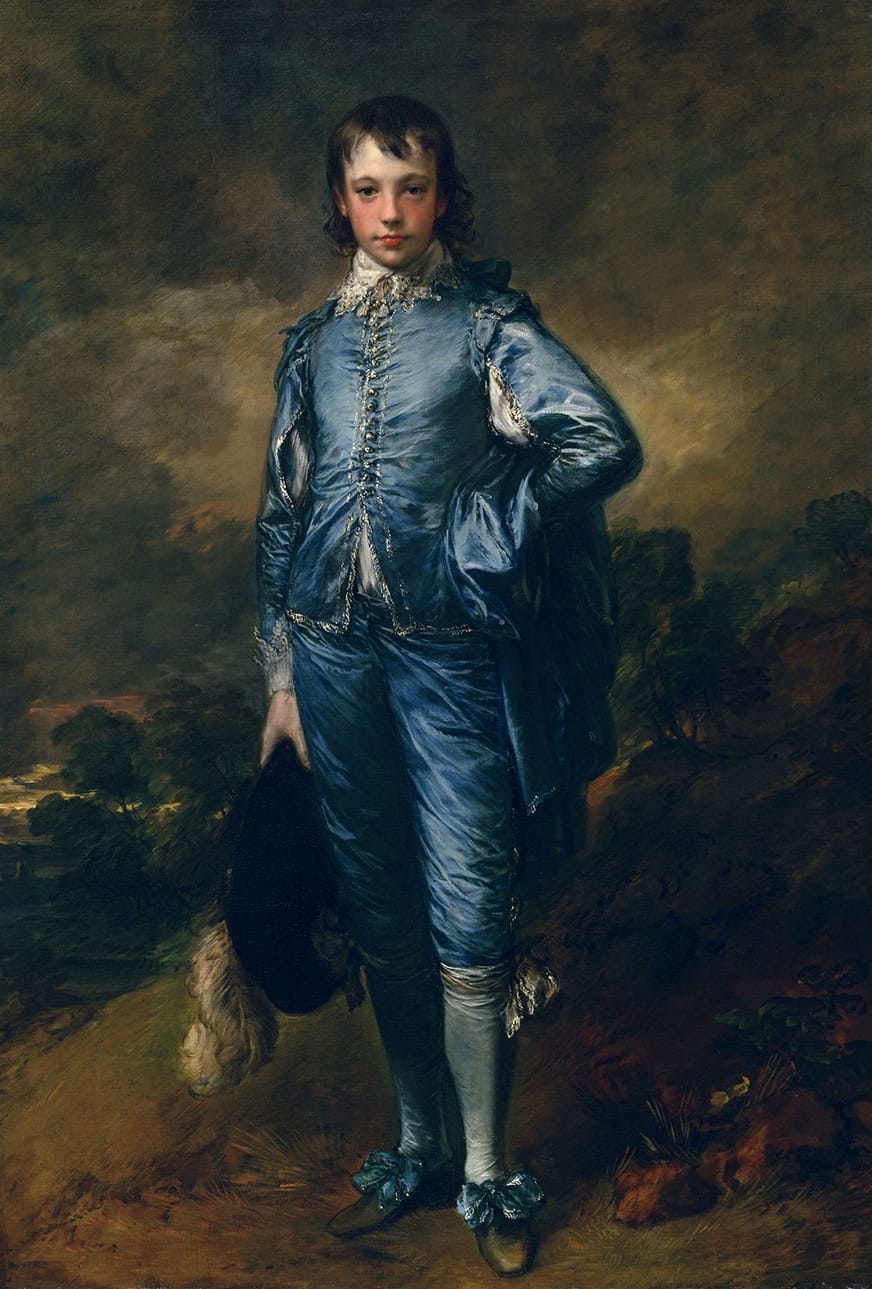
Famous Female Portraits in Art History
Historically female artists were restricted in their choice of subject matter as portraiture stood as a prestigious genre that remained mainly under male control. The exclusion of women from formal academic art training served to limit their chances of exploring prestigious artistic subjects.
Élisabeth Vigée Le Brun – Marie Antoinette and Her Children
The artwork Marie Antoinette and Her Children (1787) by French portrait artist Élisabeth Vigée Le Brun stands as an exemplary piece from 18th-century royal portraiture. The artwork was commissioned to preserve the queen's reputation amidst political turmoil and portrays Marie Antoinette as a caring mother to emphasize her human qualities for public perception. The combination of Vigée Le Brun’s graceful and forceful brush technique with her intimate depiction of the royal family established her status as a premier portrait artist during her era. The artwork Élisabeth Vigée Le Brun’s Marie Antoinette and Her Children (1787) stands out due to both its expert craftsmanship and the fact that it was created by a woman artist during an era when women generally did not reach the top levels of the art field. Vigée Le Brun demonstrated her remarkable talent and significant contribution to portraiture by successfully creating an influential work within a male-dominated art world.

Mary Cassatt – The Child's Bath
Through The Child's Bath (1893), American Impressionist Mary Cassatt creates a beautiful depiction of a tender interaction between mother and child. Cassatt portrays women and children with quiet realism and maternal warmth through soft colours and loose brushwork to craft intimate personal scenes in her portraiture. The Child’s Bath stands as an impactful illustration of portraiture's ability to depict profound human emotions and connections.

Modern Portraits: Breaking Boundaries
Artists first began experimenting with abstraction and surrealism during the 20th century to challenge established representations of likeness and bring about significant changes in art history.
Edvard Munch – The Scream
Artists recognize Edvard Munch for his portraits that explore the depths of the human mind while transforming traditional portraiture techniques. Munch’s The Scream (1893) stands as an iconic masterpiece representing psychological distress in art while also being among the most famous artworks ever created. The distorted face of the main character combined with the chaotic landscape generates deep feelings of anxiety and internal conflict. Munch’s innovative expressionist portrait explores universal human fears and produces a timeless image that still impacts multiple cultures.

Francis Bacon – Portrait of Pope Innocent X
Francis Bacon receives recognition for his raw and expressive painting style that emphasizes emotional depth. The 1953 work Portrait of Pope Innocent X stands as a quintessential expressionist piece that has achieved iconic status in art history. Through his distorted portrayal of the pope Bacon captures both psychological suffering and existential fear. A nightmarish cage surrounds the pope's face which appears twisted in deep anguish with a visceral intensity that borders on the grotesque. The symbolic use of deep reds and cool blues in Bacon’s Portrait of Pope Innocent X reinforces the painting’s emotional intensity by creating stark contrasts that emphasize suffering and isolation. The portrait showcases Bacon's deep interest in exploring human nature along with his talent to generate emotional responses through distorted and abstract elements.
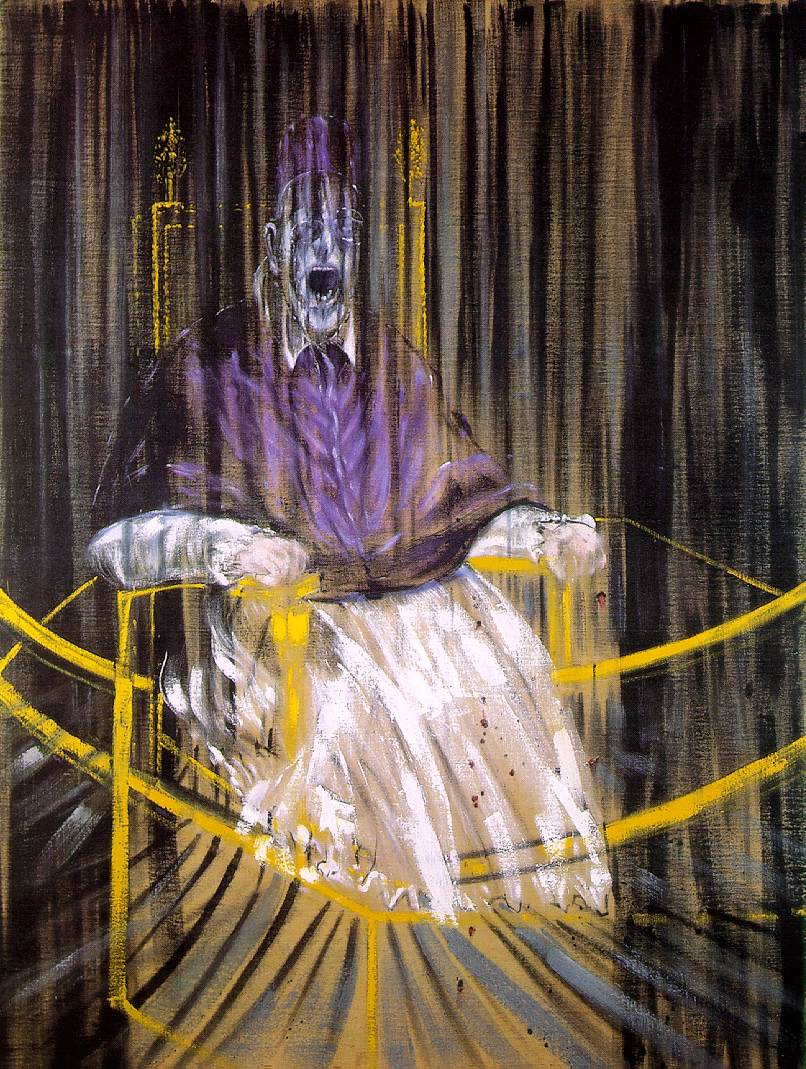
Frida Kahlo – Self-Portrait with Thorn Necklace and Hummingbird
Frida Kahlo's Self-Portrait with Thorn Necklace and Hummingbird from 1940 serves as a quintessential example of a renowned surrealist portrait. Through her mastery of symbolic imagery Kahlo uses this self-portrait to express both her suffering and her enduring strength. The painting expresses deep symbolism through elements like the thorn necklace which shows Kahlo's lifelong physical and emotional pain and the hummingbird which stands for hope and renewal. Through its vibrant colors and ethereal atmosphere, the painting draws viewers into the intimate universe of Kahlo.
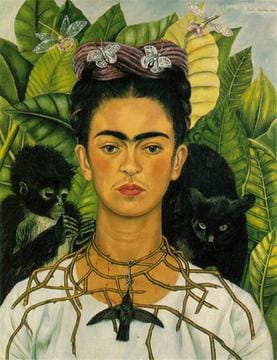
Salvador Dalí – Portrait of Gala with Two Lamb Chops Balanced on Her Shoulder
One of Salvador Dalí's famous surrealist paintings is Portrait of Gala with Two Lamb Chops Balanced on Her Shoulder from 1936. This artwork pioneers a new method of portraiture by utilizing surrealism to confront standard portrait methods. Dalí merges reality with fantasy using extraordinary components like the surreal depiction of lamb chops resting on his wife Gala’s shoulder. The playful and disturbing representation showcases Dalí’s obsession with the subconscious realm and demonstrates his skill in merging surreal visions with psychological complexity to narrate through visual art.
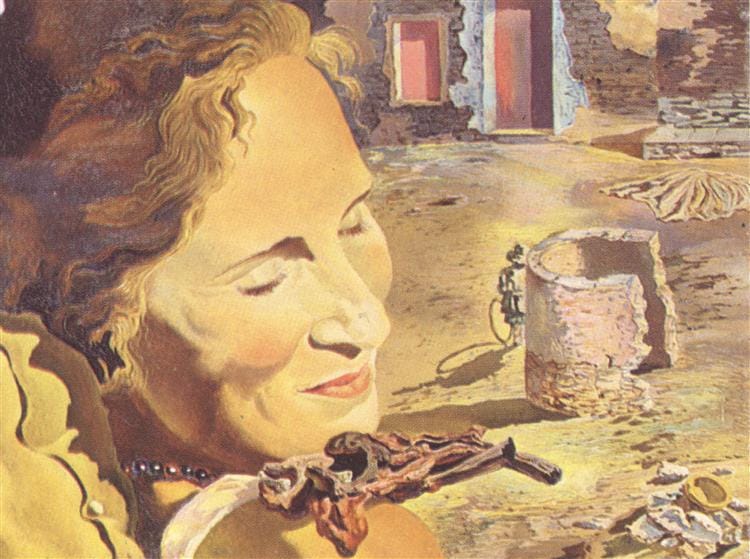
Iconic Portraits in Modern and Contemporary Art
Portraiture in contemporary art develops further by merging realistic representation with pop culture elements and celebrity imagery as well as psychological expression.
Andy Warhol – Marilyn Diptych
Andy Warhol redefined 20th-century portraiture through his Marilyn Diptych (1962) which stands as a key example of his pop art method. A collection of Marilyn Monroe's images in the series redefines the actress as a timeless symbol of celebrity culture. Through his bold color palette and silkscreen printing method Warhol contests established artistic standards and transforms portraiture into a statement about mass production and consumerism while depicting the fleeting nature of celebrity. Through his depictions of Monroe Warhol demonstrates how media and advertising industries dehumanize individuals by turning them into commercial commodities. This artwork demonstrates Warhol's dual interest in fame's allure and hollow nature while standing as a key piece in discussions around art and popular culture identity.
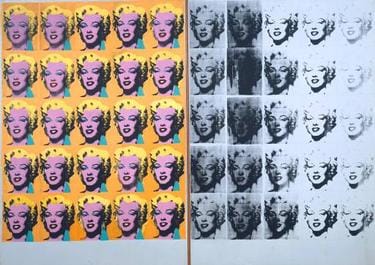
Lucian Freud – Benefits Supervisor Sleeping
Lucian Freud became a leading British artist of the 20th century through his portraiture that transformed realism into unsettling extremes. The artwork Benefits Supervisor Sleeping (1995) by Lucian Freud defies conventional beauty standards through its hyper-realistic portrayal of an overweight woman lying in an unidealized position. The portrait becomes a profound examination of human vulnerability and mortality through Freud's detailed depiction of bodily physicality. The detailed scrutiny he applies to human imperfections produces an honest depiction that deliberately challenges traditional beauty norms and standards of propriety. Through his stark realistic style, Freud demonstrated that authentic portraiture unveils fundamental human truths beyond mere physical resemblance which establishes him as an essential figure in modern portraiture.
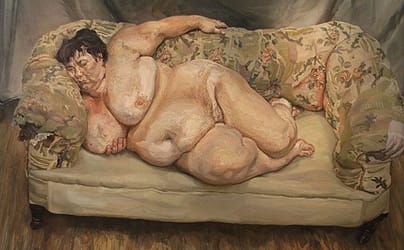
Cindy Sherman - Untitled Film Stills
Cindy Sherman earned recognition through her self-portraits that examine identity and gender issues while examining how society constructs female roles. Through her dual role as both the subject and photographer Sherman subverts conventional ideas about portraiture while simultaneously mixing reality with artistic fiction. Through her artistic practice she analyzes the depiction of women in media and culture by adopting numerous characters that demonstrate the evolving standards and stereotypes of womanhood. Untitled Film Stills (1977–1980) stands as one of her most impactful works through its 69 black-and-white photographs where Sherman captures herself as multiple female characters that bring different movie stereotypes to life. The series serves as both a critique of Hollywood representations of women and an examination of Sherman's broader investigation into constructed identities and performative self-representation. Sherman transformed portraiture by using self-portraits to explore social commentary and the intricacies of both personal and collective identity.
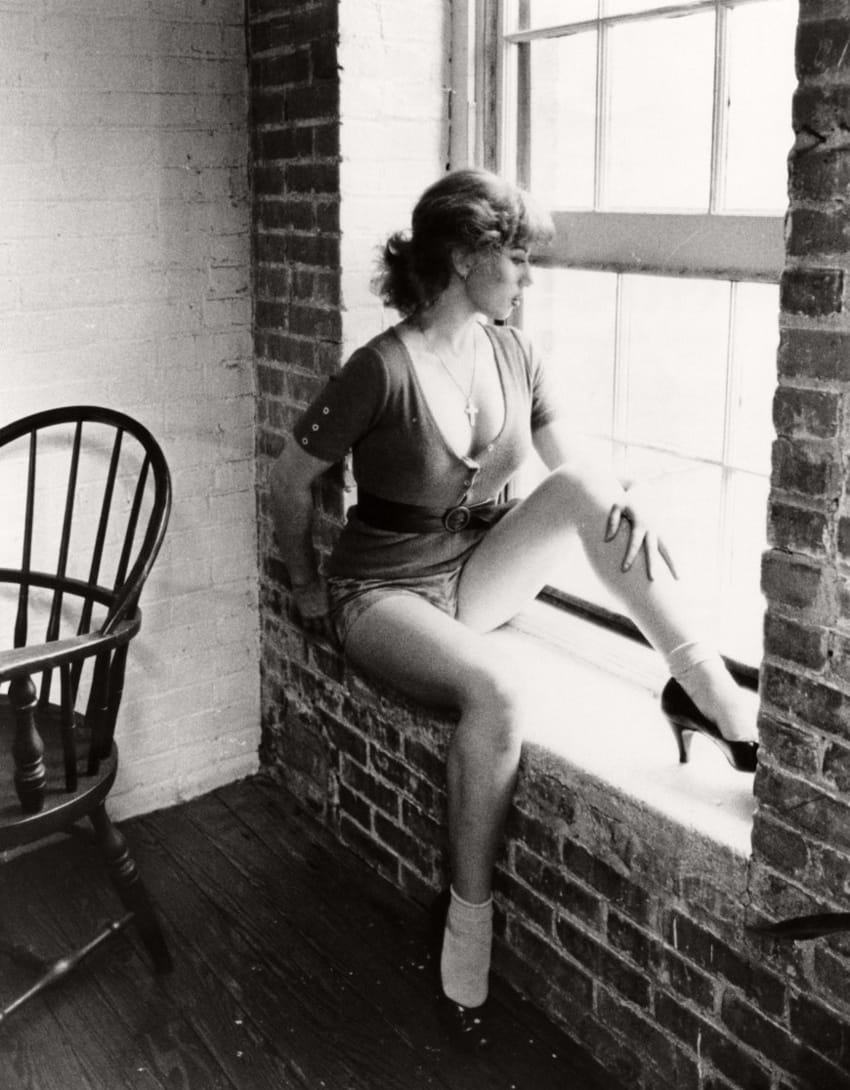
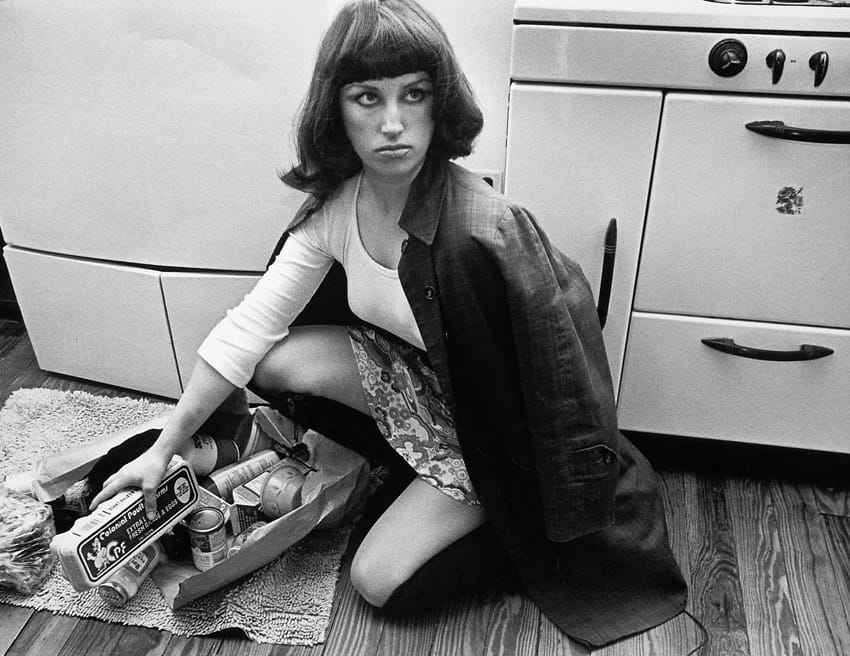
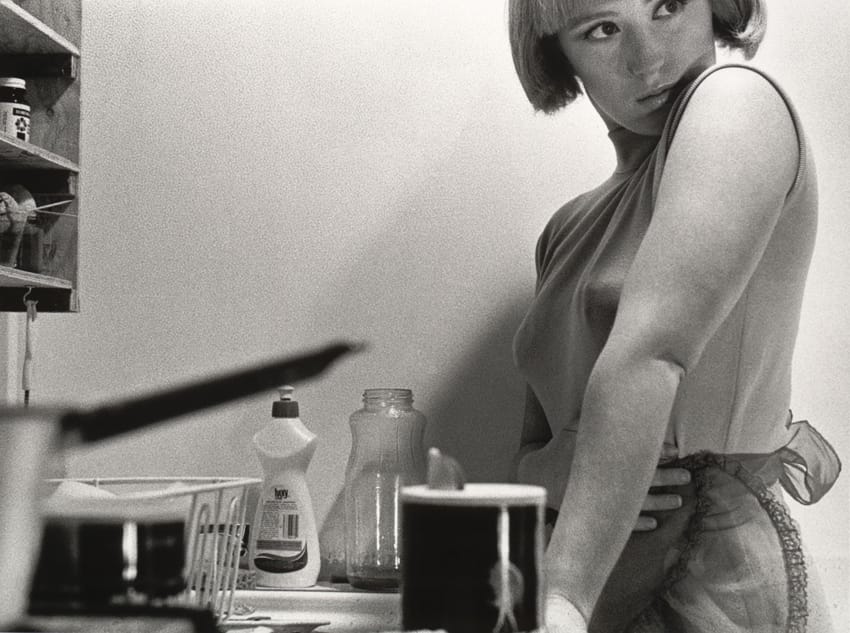
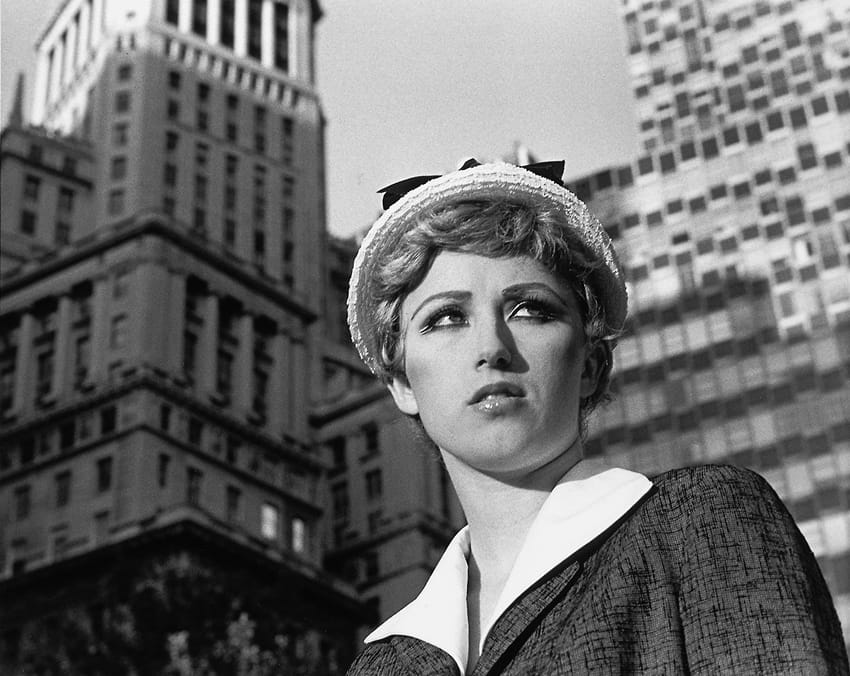
Some of “Untitled Film Stills”, Cindy Sherman, 1977–1980, black and white photographs
The historical evolution of portrait paintings from classical to contemporary forms has sustained their fundamental influence in art history through their ability to depict both the visual likeness and human essence of their subjects. The enigmatic smile of Mona Lisa together with the emotional depth of Portrait of Pope Innocent serve as examples.
